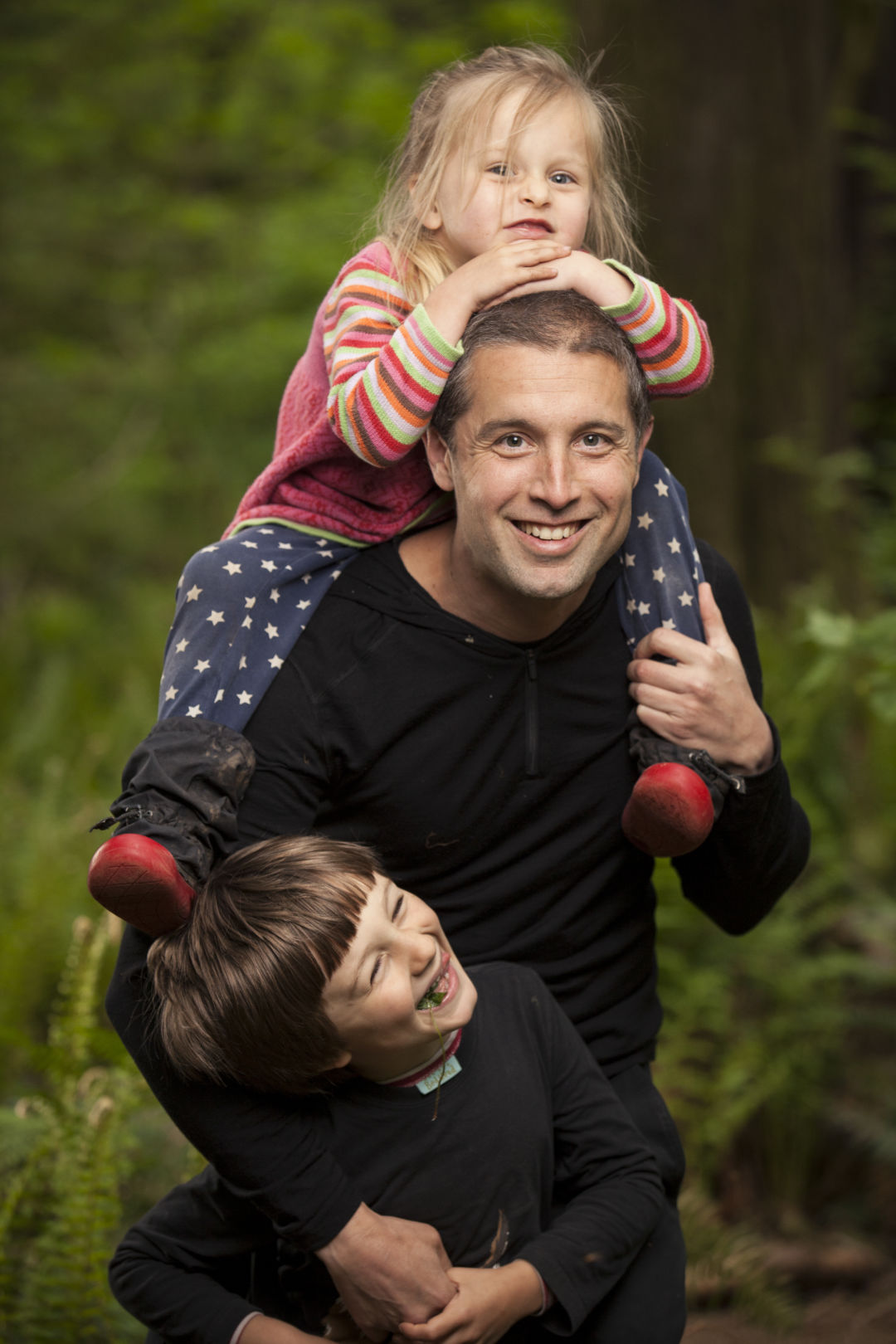School's In, at Your House. Now What?

Tony Deis of Trackers Earth, with two of his three home-schooled kids
Image: Courtesy Tony Deis
We’re all homeschool teachers now.
This week, the Oregon Department of Education released a lengthy memo that all but made it official that Oregon schools will be closed through the end of this school year at least. (Let’s not even talk about whether they will reopen next September, lest the heads of every parent in the state explode simultaneously.)
“We know there is a very real potential that our students, like in many other states, may not return to school this academic year,” Oregon Department of Education Director Colt Gill wrote to the superintendents of Oregon’s 180+ school districts, calling instead for a “distance learning for all” program, taught online, over the phone, and via tools like Google Classroom, though that will look different district-by-district, and even school-by-school.
How often your kid will “see” their teacher will vary, too, with grades K-1 maxing out at 45 minutes per day, grades 2-3 at 60 minutes, grades 4-5 at 90 minutes and grades 6-12 at 30 minutes per teacher, for a maximum of three hours a day.
That leaves a lot of hours in the day, and Gill made it clear in his directive that the state will be leaning on parents for support, particularly those with elementary-school-aged kids: “It will be important for parents to know their role to support, including making time outside interactions with their child’s teacher to serve as tutors, helping to ensure attentiveness to the instructional time with teachers, providing structure to the daily schedule and helping support connectivity and continuity of technology at home, and more.”
That’s where Tony Deis comes in. He’s the founder of Trackers Earth, the summer camp/outdoor education giant with offshoots in the Bay Area, Denver, and Seattle that’s turned many a Portland kid into a budding survivalist, teaching them how to start a fire without a match, handle a bow and arrow, identify edible wild plants, and build a shelter from mud and sticks. (All skills that seem increasingly handy during our quarantine-induced back-to-the-land moment, when sales of baby chickens and vegetable seeds are going through the roof and sourdough starters are incubating in kitchens citywide.)
Deis is also a practiced home-school parent, who has been teaching his own kids at home for years. Since the COVID-19 pandemic hit Oregon, even he has had to resort to screens more than usual, though, as he’s worked to transition his own staff into a distance education enrichment model, part of a rash of online courses for kids that have cropped up in the last few weeks, while moving full steam ahead with plans for a full summer camps schedule, in hopes that the virus will have subsided enough not to derail that too.
(His own kids are partial to Phineas and Ferb, animated tween pranksters famous for their hijinks during a 104-day summer vacation, which we have now easily bested.)
feeling like phineas and ferb rn pic.twitter.com/kfOXtBQGZv
— lmao (@_otosan__) March 20, 2020
"My primary job is to shape my kid into an autodidact, someone who can learn on their own,” he says. “Education is an ongoing conversation of pretty furiously fascinating debate and sending them off to go research things. I believe that kids have more capability than our culture and current educational system gives them credit for. If we set high standards for them, they will step up.”
Start by making sure that your kids have the ability to read what they want, at the level they want, says Deis.
“After that, start stirring the pot with your conversations with them," he says. "Don’t shy away from having conversations about complex ideas. The other day, I had a conversation with my kids that started with whales, then moved to evolutionary biology and the overall history of how people have interacted with marine life. All of a sudden, they were poring through field guides, discovering tide pools, biodiversity, and things like that.”
Math is not overlooked, either: Deis says he regularly gives his kids “mental math challenges” with little warning: “Like what is 327 plus 643? We will break down how to do it in their head.”
If you’ve got older kids, put them to work as coaches and teachers for younger ones, he advises, while if you’ve got a yard, it can become a working science classroom, where kids can learn all about the plant kingdom.
And though it’s unusual for someone whose life’s work is getting kids outdoors, Deis says video conferencing programs like Zoom and Google Hangouts are important tools right now, even in households with strict screen time limitations, so kids don’t have a sense of isolation.
Last but not least in the pep talk we all need right now, Deis advises not pretending that everything is OK with your kids, but instead finding ways for them to help you out too, as we all adjust to being at home, around the clock, for no-one knows how long.
“When you tell kids, ‘It took a weight off my shoulders that you did the dishes,’ it shifts how they approach the world,” he says. “Give them good direction about what will help you out and take a load off you as a parent. You don’t have to be perfect all the time. They can always find new ways to adapt—kids are way better at this than adults.”




